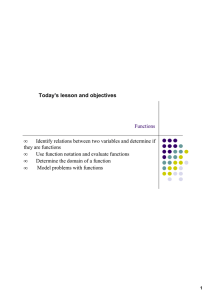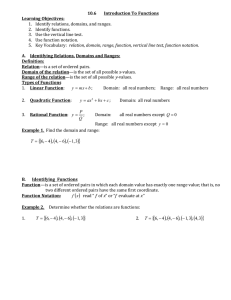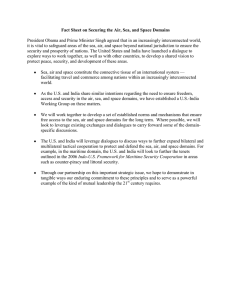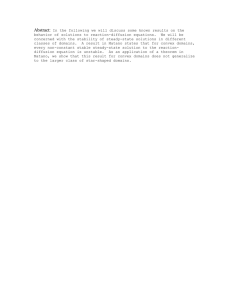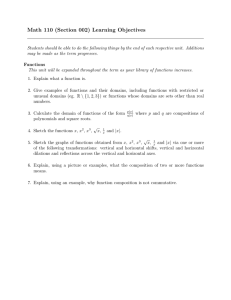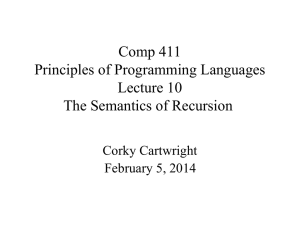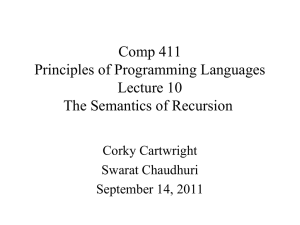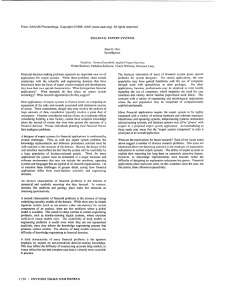Functions And a whole bunch of other goodies
advertisement
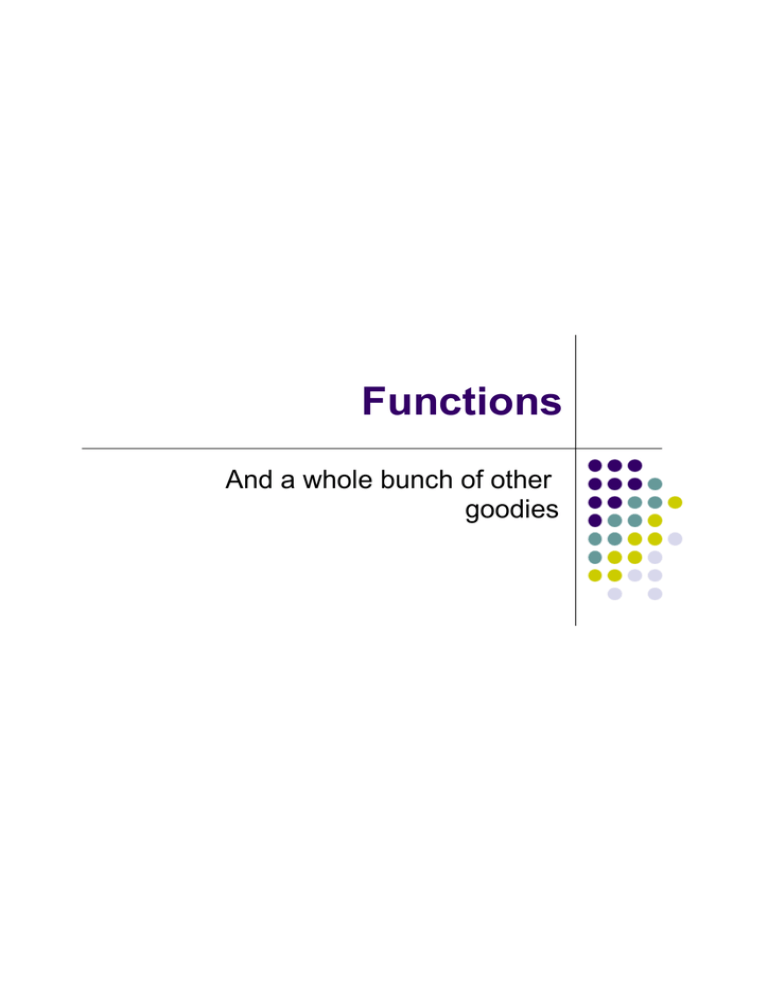
Functions
And a whole bunch of other goodies
Functions
• A function f from set A to set B is a rule that to each element (INDEPENDENT) of the set A assigns EXACTLY one element of the set B (DEPENDENT). • Set A is called the domain of f, while B is called the range of f. Different ways to describe a function
• Verbally – sentence describing how the dependent and independent variable are related • Numerically – using a table or list of ordered pairs
• Graphically – drawing all the ordered pairs on a coordinate system (the independent variable corresponds to the horizontal axis, and dependent to vertical)
• Algebraically – writing an expression that describes how one variable depends on the other
Are these functions? Find the domains and ranges.
• There are 120 students in the class M1050. • To each student in the class M1050 we associate their grade on the final exam. Domain: Range: Function: yes
no
• To each score 1 to 100 we associate a student with that score. Domain: Range:
Function: yes
no
Are these functions? Find the domains and ranges.
• {(1,2), (1,3),(2,4),(2,5),(3,6),(3,7)
Domain:
Range: Function: yes
no
• {(2,8),(3,7), (4,6),(5,7),(6,8)}
Domain: Range:
Function: yes
no
Is this a function? Find the domain and range.
x
y
1
13
2
21
3
17
3
17
4
12
5
15
Is this a function? Find the domain and range.
• Is y a function of x if we have 3x + 5y = 2 • Question: “Do we have only one y for each x?
To find that out we should express y in terms of x, and see if we get a unique (only one) value of y for each individual x:
Is this a function? Find the domain and range.
• Is x a function of y? We have 3x + 5y = 2 • Question: “Do we have only one x for each y?”
To find that out we should express x in terms of y, and see if we get a unique (only one) value of x for each individual y:
Function notation and evaluating functions
Evaluate function g at 2, 4, ­3, 1/2
Piecewise defined functions
• Evaluate f at 6, ­12 and 0
• Draw a table of values for x∈[­1, 5]
x
­1
0
1
2
3
4
5
f﴾x﴿
Find the domains of the following functions
Find the domains of the following functions
Find the domains of the following functions
Graph of a function f is the set of all points (x, f(x)) in the coordinate plane. • Graph f(x)=2x­1
What can the graph tell us? • Can I read the value of a function at a given point? • If I know the value of the function, can I find its origin (the value of independent variable this value corresponds to)? • Can I read the domain and range? What can the graph tell us? f(1) =
f(0)=
f(­1)=
For what x is f(x)=6
f(x)=­4
f(x)=4
Domain
Range
Is this a function? Find its domain and range
Vertical line test
• A curve in the plane is a graph of a function of x only if every vertical line intersects that curve in at most one point. Review
• Let the function f be defined by • Indicate whether the following statements are true or false: 1. f(x) is never positive. 2. f(x) is never zero. 3. 0 is in the domain of f
4. All negative real numbers are in the domain of f 5. All positive real numbers are in the domain of f
6. 1 is in the domain of f
7. f is never negative.
http://matti.usu.edu/grapher/
